Month: July 2021
Wasserspiele
Exhibition: July 29 – September 7, 2021 | extended until September 30, 2021
11am – 6pm | mon – fri
Maximilianstraße 26, 80539 München
All artworks are available for purchase. Prices upon request. For further information please send an email to: contact@danielblau.com

We associate green with Spring, with new birth and rebirth and plants as they sprout and grow.
Green
We associate green with Spring, with new birth and rebirth and plants as they sprout and grow. As the color of yearly renewal and of the triumph of spring over cold winter, green symbolizes hope and immortality. The very root of the word in German – ‘grün’ – lies in the old Germanic ‘ghro,’ whose meaning is fundamentally to grow and to thrive.
Nor, for that matter, is the relationship between the English words ‘grow’ and ‘green’ a coincidence. With the help of sunlight and carbon dioxide, which man and animal alike expel in breathing, the plants of the world are able to produce starch and the oxygen so necessary for our own life.
The magic ingredient in photosynthesis is the green pigment chlorophyll, which possesses the ability to transform inorganic substances into organic ones.
In ancient Egypt, the color green carried, along with blue, primarily positive connotations. The ancient Egyptian goddess of the sky (and of cows), Hathor, was portrayed on occasion in the form of a green tree. She was taken to be mistress of both love and life. Green malachite was of particular importance. The stone would be ground down and mixed with egg white, acacia resin, or fig sap to create emerald paints, used for instance by Egyptian women as eyeshadow. Along with its use as a pigment, it was, and remains today, a highly prized gemstone. The Egyptians mined the mineral on Mount Sinai, extracting copper from the ore. In the Arab world, pulverized malachite was taken as an antidote to poisons and to counter ulcers. The same was true of the gemstone emerald.
Green, in the Middle Ages, was the color of love, but not of love alone: evil serpents and demons were increasingly portrayed clad in or surrounded by green as well. In ancient China, dragons still possessed very positive meanings. They symbolized the divine power of transformation, the rhythm of nature, as well as supernatural wisdom and strength. In each instance, the positive symbolism of the dragon and the color green went hand-in-hand.
Christianity took the positive symbol of the dragon and turned it on its head, creating a monster from it, one that combined everything evil and destructive in it. The skin of Christian demons was colored green, like their eyes, and far from being bridges to divine wisdom they led their victims directly to hell.
Fertility’s association with the color green became a mark of shame as the guardians of Christian morality sought to avoid every hint of excessive sexuality. The Devil – in his style as hunter of souls – appeared in green clothing. Although many artists of the Middle Ages had painted Christ upon a green cross, and many saints in their paintings wore green themselves, as a symbol of hope, the idea that green and gold together indicate poison existed then and has endured to the present day. This association was so strong that it led to the term ‘venom-‘ or ‘poison-green.’
A truly poisonous ‘venom-green’ green actually does exist, though only since 1805, when chemists in the German city of Schweinfurt sought to create a paint more deep-green than what existed at the time. Its recipe calls for verdigris and arsenic acid. After application to, for instance, the walls of a room, moisture can still interact with the paint, resulting in a chemical reaction that produces toxic fumes of arsenic compounds. In German it is still called ‘Schweinfurt green’; ‘Paris green’ is the more common name in English, due to its later application as rat poison in Parisian sewers. Napoleon had a particular affection for the color green. The walls of his exilic room on St. Helena were painted in Paris green. When Italian chemists of our own century, a team from the University of Milano-Biocca, conducted a chemical analysis of Napoleon’s hair, they found elevated concentrations of arsenic in it. Theories erupted following the results’ publication, claiming that Napoleon died from arsenic poisoning. Following a more recent and more precise examination by the Milanese professor Ettore Fiorini, arsenic was determined not to have been the cause of Napoleon’s death. Evidently, the emperor had died of a stomach tumor.
Sources/Further Reading:
Adapted from: Thomas Seilnacht, “Naturwissenschaften unterrichten. Didaktik der Naturwissenschaft”, online: Sailnacht, “Phänomen Farbe. Grün”: Lexikon Grün
Robertson, D. W. “Why the Devil Wears Green.” Modern Language Notes, vol. 69, no. 7, 1954, pp. 470–472. JSTOR, JSTOR
Hutchings, John. “Folklore and Symbolism of Green.” Folklore, vol. 108, 1997, pp. 55–63. JSTOR,
Dorothee Fauth, “Kunstlexikon. Porträt,” June 2, 2005, for Hatje Cantz online:
JSTOR
All photographs are available for purchase. Prices upon request. For further information please send an email to: contact@danielblau.com
All offers are noncommital. We cannot guarantee the items are still available on request.
Other Diversions
Study 'Colors, Emotions, and the Auction Value of Paintings' R.E.M. Green Album (1988) Playlist Sing along 'Grün, grün, grün sind alle meine Kleider' Sing along '10 Green Bottles' Noteworthy Greens Guiseppe Verdi at the Met Verdi's 'Rigoletto' (full movie) 1982 starring Luciano Pavarotti Asteroid 'Green' Attenborough's Paradise Birds - BBC

31 x 23 cm, © John Lurie, courtesy Daniel Blau, Munich
[RE] GENERATION
2 Space Pop-up Art Show
Opening July 2nd at 4 pm
at
Knust Kunz
Ludwigstraße 7
80539 Munich
mail@sabineknust.com
www.sabineknust.com
+49 (0) 89 29160703
from July 2nd until July 7, 2021
Daniel Blau
Maximilianstraße 26
80539 Munich
contact@danielblau.com
www.danielblau.com
+49 (0) 89 297342
from July 2nd until July 16, 2021
Proceeds from the exhibition will go to support the creation of the frst physical [Re]generator, hopefully in Kamikatsu, Japan. Kamikatsu is known as Japan’s “zero waste town”. The hope is that such a space, will serve as a model to other towns around the world, to adopt similar approaches to local ecological and social challenges. The “creative citizen’s assembly” problem-solving model applies new insights from deliberative democratic practice emerging around the world. Through this creative space, it is hoped that new creative engagements, reciprocities and ecologies between humans and their environment can emerge. In this way, the [Re]generator could inspire a new circular ecology of regenerative art and artistic regeneration.
The organisers of [RE] GENERATION believe that social, political and ecological healing, must begin with the imagination. By bringing a diversity of dynamic creative perspectives into one space, we wish to inspire the public to join us on a journey of discovering alternative visions of the possibilities for life on our green Earth. The exhibition has been curated with the help of Valeria Diaz Granada.
From July 2nd, 2021, two of the artists in [RE] GENERATION, China Marks and Chris Bianchi, will also be exhibiting in a parallel two-person show, BONKERZ GARDEN, at KNUSTxKUNZ+ on Theresienstrasse 48.
Online Showroom
Link launching on Opening Day July 2nd
Participating Artists:
• Amanda Lees
• August Alexander
• China Marks • www.chinamarks.net
• Chris Bianchi • www.chrisbianchi.co.uk
• Clara • www.vimeo.com/secretsbyclara
• David Sater • www.davidsater.net
• Duy Hoàng • www.duy-h.com
• Ella Belenky • www.ellabelenky.com
• Hans Kern • www.swarming.global
• Lara Schnitger • www.antonkerngallery.com/artists/lara_schnitger
• Neal Fox • www.nealfox.co.uk
• Robert Rubbish • www.robertrubbish.blogspot.com
• Satch Hoyt • www.satchhoyt.art
• Steph von Reiswitz • www.stephvonreiswitz.com
• Thad Higa • www.thadhiga.com
• Victorin Ripert • www.victorinripert.tumblr.com
• LE GUN collective (Neal Fox, Robert Rubbish, Steph von Reiswitz • www.legun.co.uk)
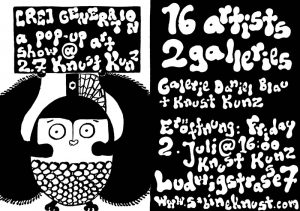






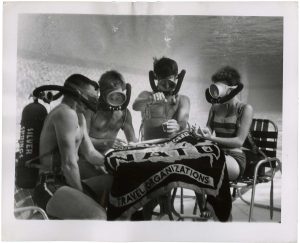

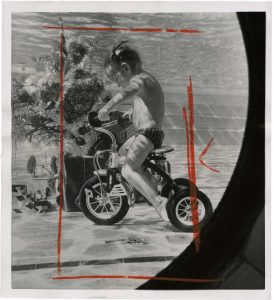
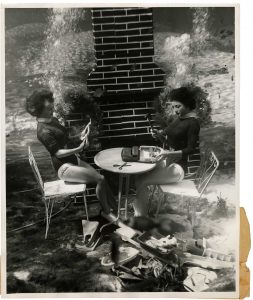

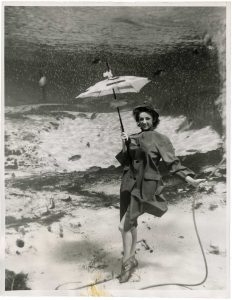

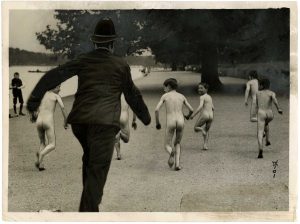

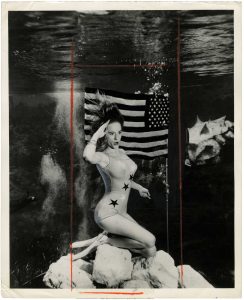

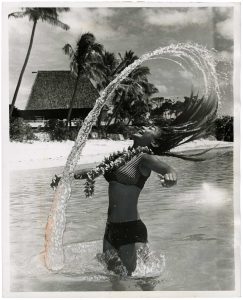
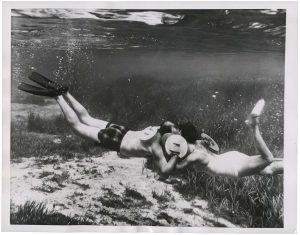
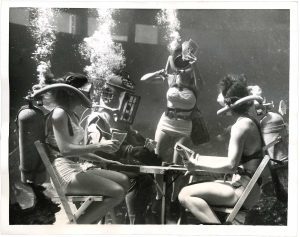
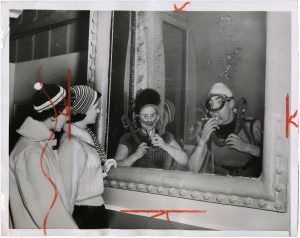
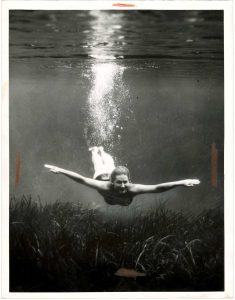
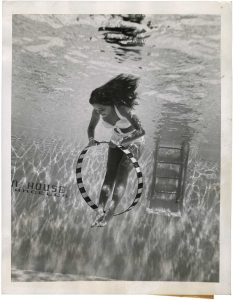
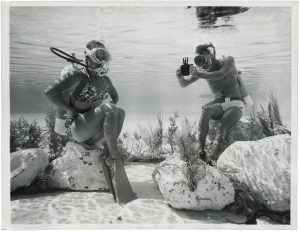
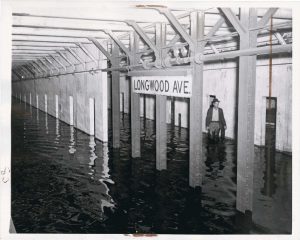

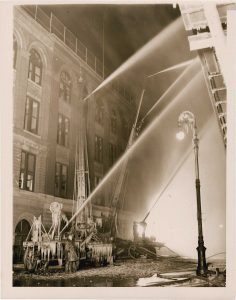
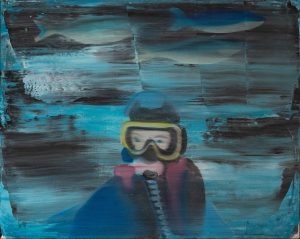
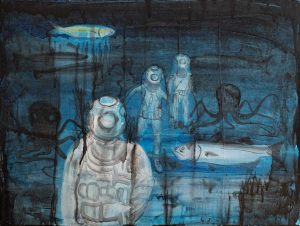
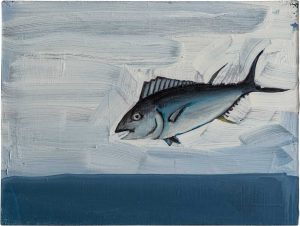
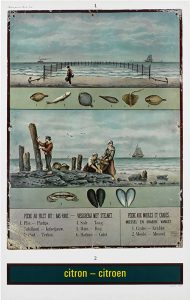
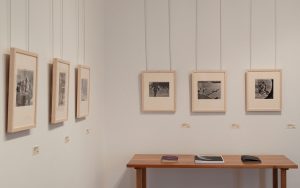
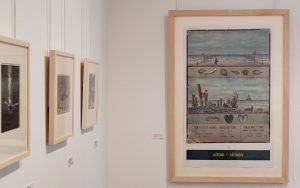
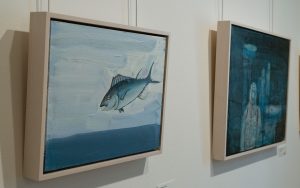
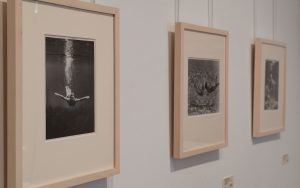
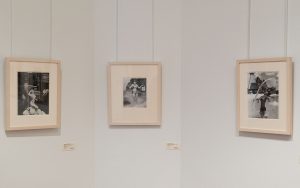


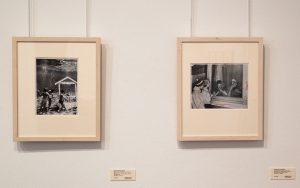

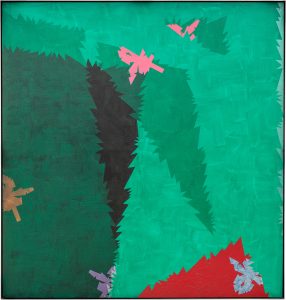
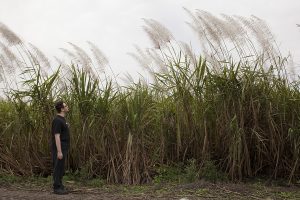


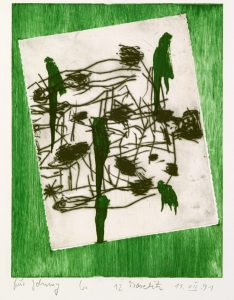
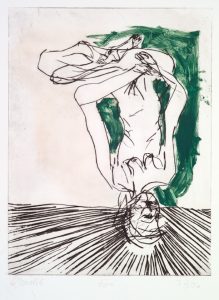
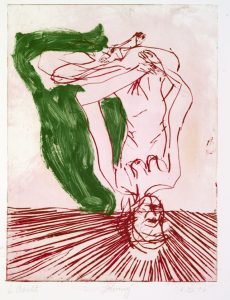
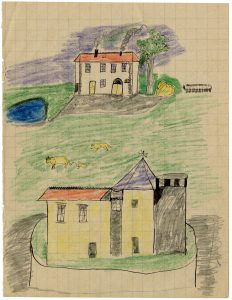
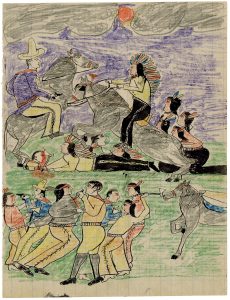
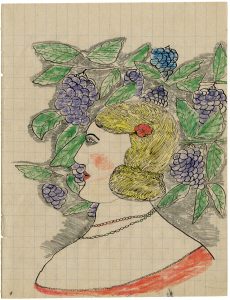

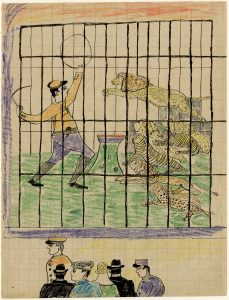
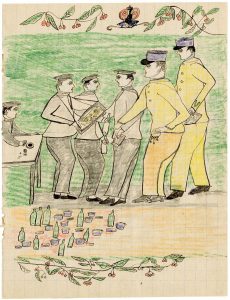

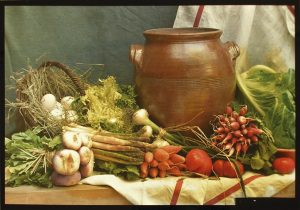
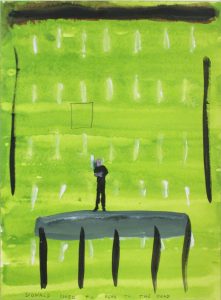
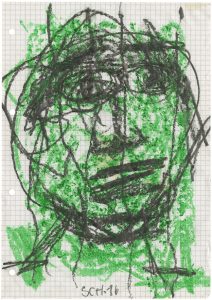
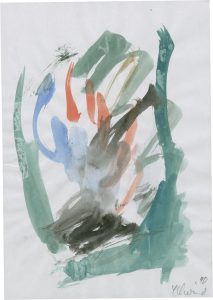
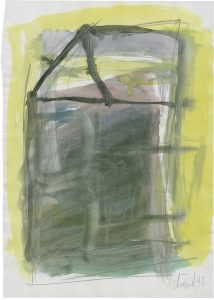


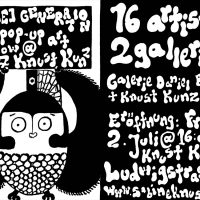
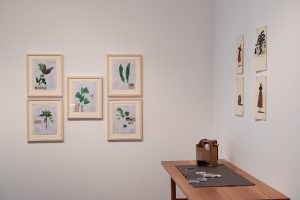

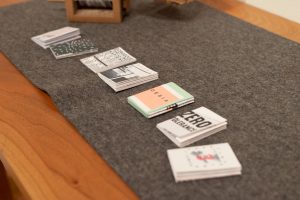
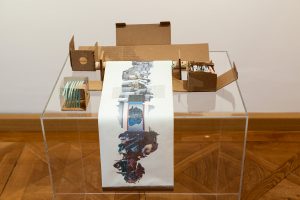
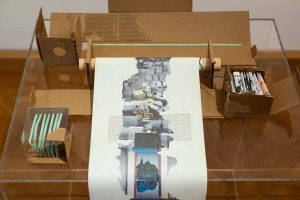
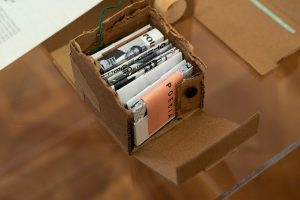
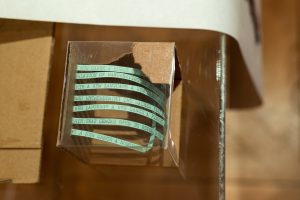
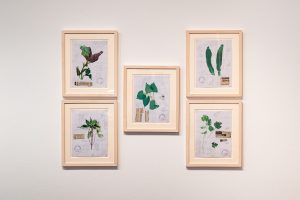
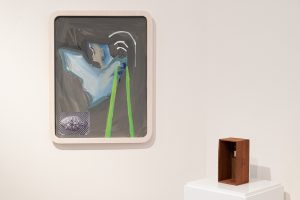
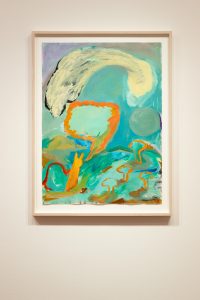
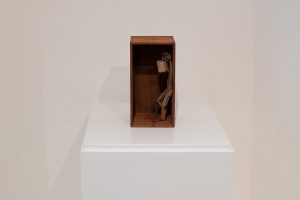
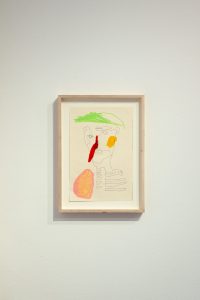

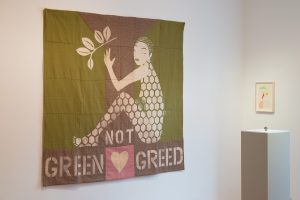



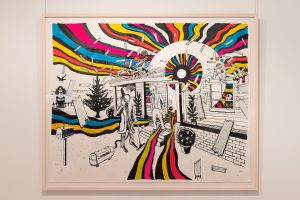
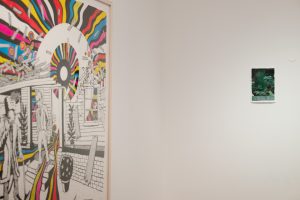

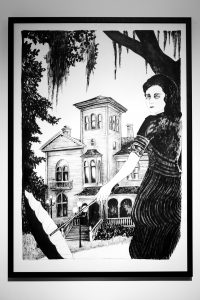
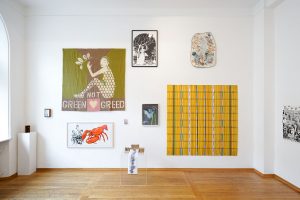
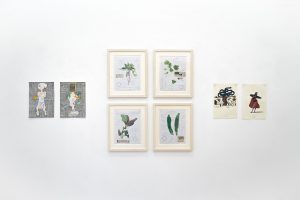
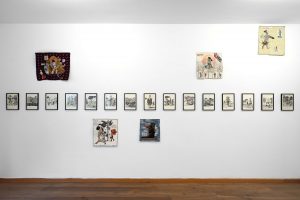
 +49 89 29 73 42
+49 89 29 73 42